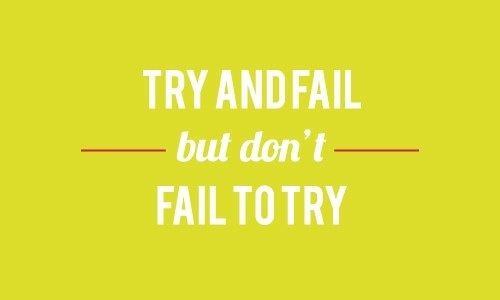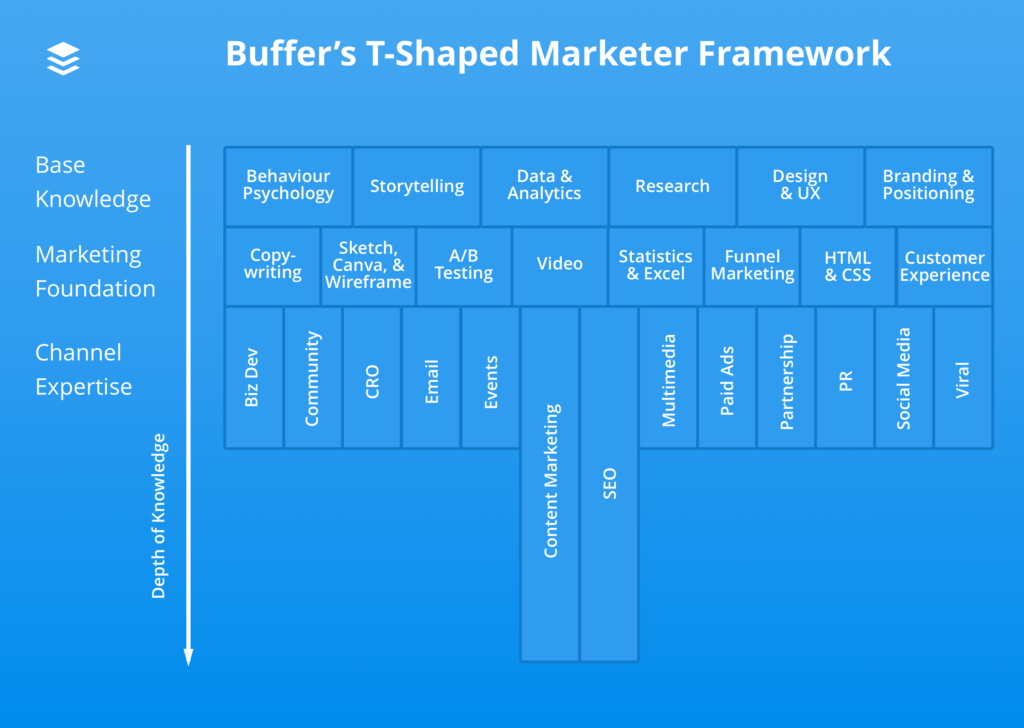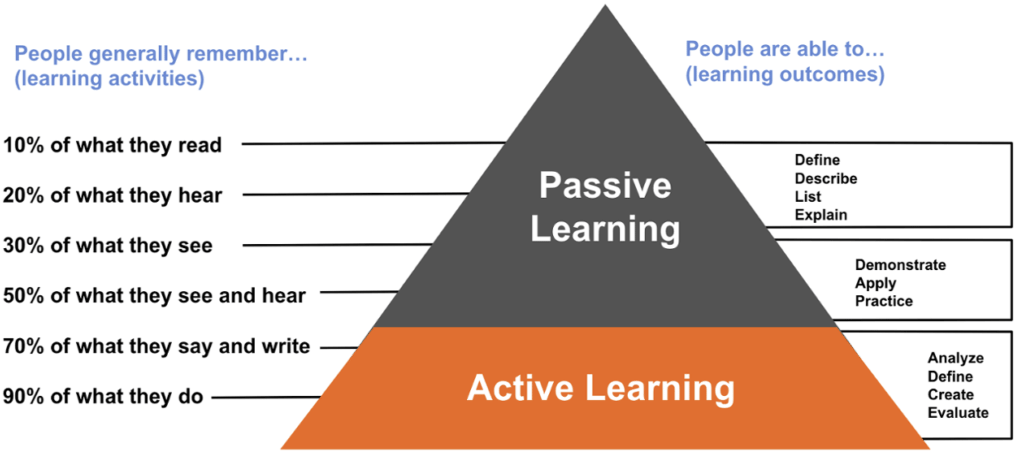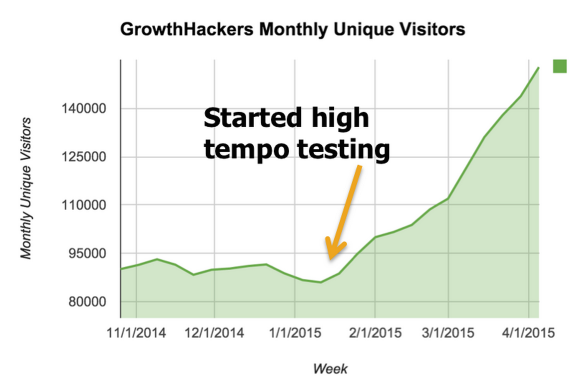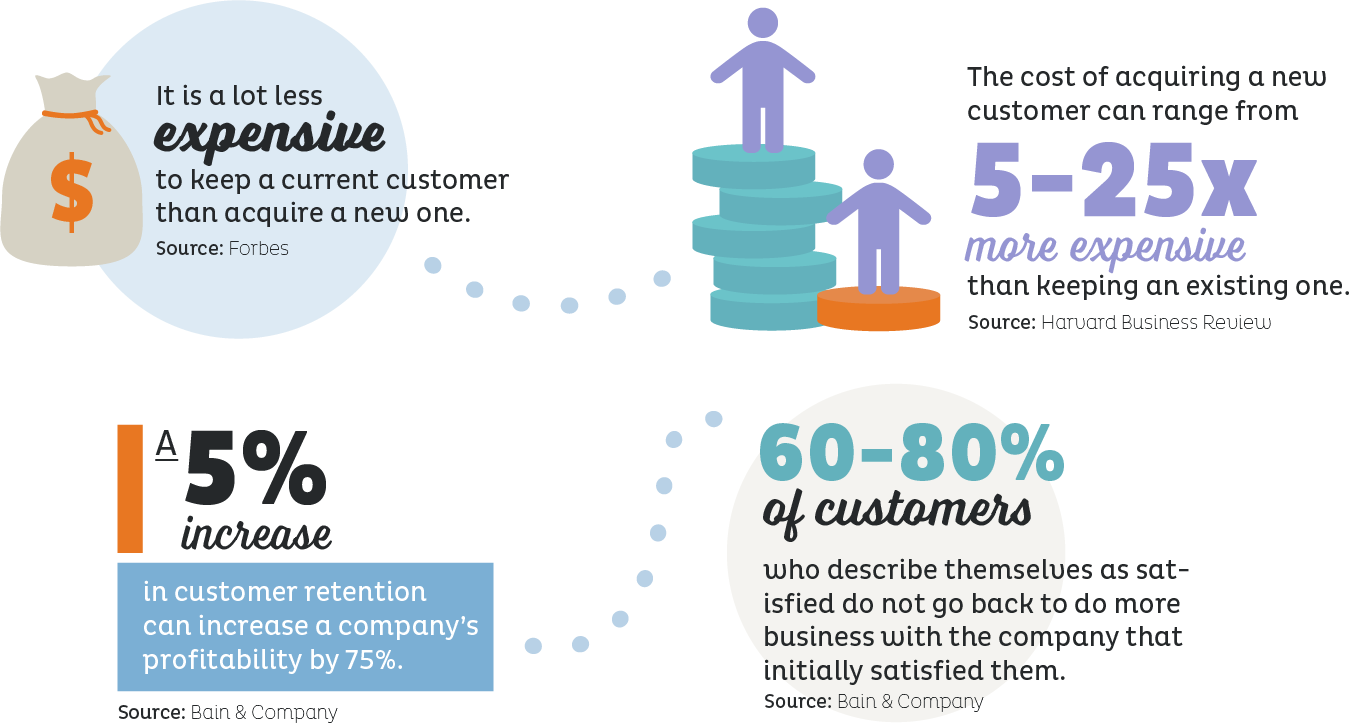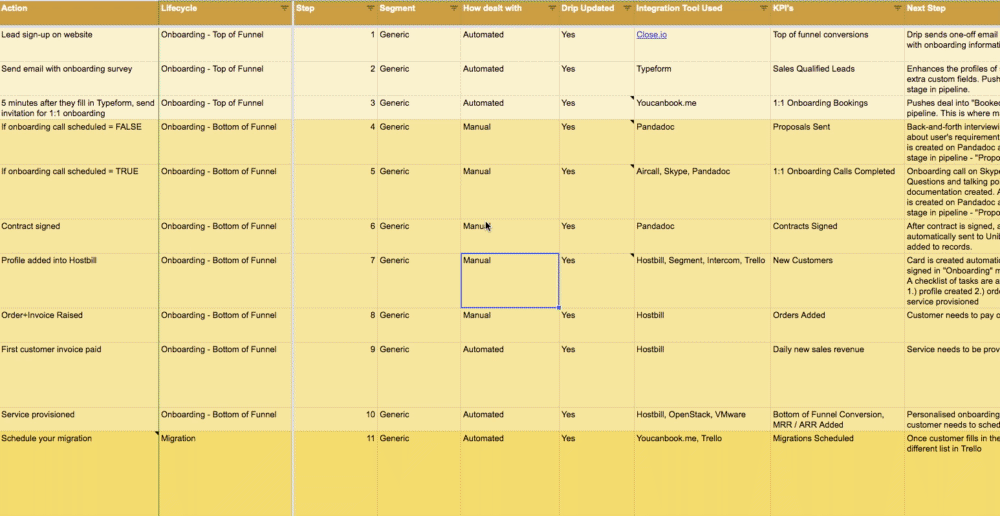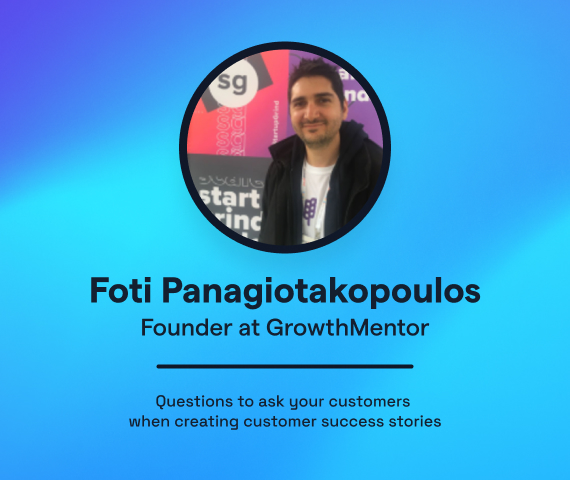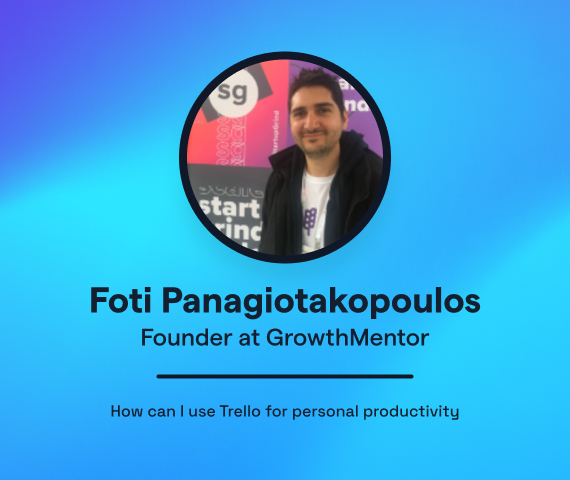Tips on how to learn growth marketing: inspired from my mistake filled 12 year journey
There are plenty of other posts that talk about what growth marketing is, but this one’s different.
I’m going to share my advice on how to learn growth marketing, from my personal perspective running growth at EuroVPS and subsequently creating GrowthMentor.
Adopt the mindset of a growth marketer
When I started marketing in 2007 I had no idea what I was doing.
I look back at my email box from 2007-2009 and it’s filled with ridiculous emails I was sending to freelancers, asking the stupidest questions and making the most moronic decisions.
But it didn’t matter, I was doing it anyway.
Here’s a mindset hack I can recommend
The “There’s Always A Way” Hack
When things seem really hard just ask yourself this question, “Do you think there’s anyone out there that could figure it out if they were in my shoes?”
Let’s be honest, your challenge is probably something marketing/growth/product-market-fit related.
People are solving harder problems than that.
Using CAD, more than 40 wind tunnel tests were conducted to examine the effects the wind would have on the tower and its occupants, according to the building’s owners. Large structural analysis models and facade pressure tests were also done, as was micro-climate analysis of the effects at terraces and around the tower base. As a result the whole tower was rotated by 120 degrees by engineers to reduce the stress from winds at such a height.
If they can figure out how to make THAT work – then you can probably figure out how to achieve a 3:1 LTV to CAC ratio.
Stop crying and get to work, you’ll figure it out 😉
Become an excellent writer, it’s required
Unless you’re a graphic designer, it’s all about that writing.
- Ad copy
- Outreach emails
- Subject lines
- Landing pages
- Anything and everything
It’s all going to come down to writing stuff that makes the people that read it feel and think a certain way.
Here’s my advice for writing:
- Shorter sentences on average, but don’t be scared to mix it up.
- Write just like you speak. Keep it casual. If you’re a talker, you’re in luck! Record yourself babbling and then transcribe it. Use Descript to transcribe automagically.
- Don’t try and sound smart by using fancy words. Add value. That’s all people care about.
- Avoid wall of text.
- Write in beast mode first with zero editing, and then cut down at the end.
- Keep a daily log, when you write for yourself you’re less self-conscious and tend to write more naturally. This is the style of writing that works best!
- Don’t overthink it. There’s so much content out there, you’re basically invisible anyway. Don’t worry about being judged.
Productive > T-Shaped
Any blog post you’ll read about “how to learn growth marketing” will harp on about being T-shaped.
That’s great and all, but don’t become T-shaped for the sake of being T-shaped.
Be T-shaped as a result of learning new things that are required to learn in order to reach your short term goals, let it happen naturally.
For example, I didn’t try and learn Google Ads and Facebook ads until I had learned the fundamental of web design and conversion rate optimization and had a product that was worth spending money on ads to send traffic to.
Learning new things just for the sake of learning them is #academia
Active Learning > Passive Learning
When I want to learn how to do something new I always prefer active learning vs. passive learning.
My active-learning process:
- Spend no more than one-day consuming data (while taking notes)
- Dive right into it and learn by doing. Avoid the comfort zone at all costs. For example, in the case of a new PPC channel, since real-money is at stake, I’ll create campaigns, ad sets, ads, and the whole nine yards, but just not set them live yet.
- After I’ve given it my best shot, I’ll talk to a verified expert to answer any final questions and audit my work.
That active learning process helped me hack my learning curve like crazy.
It worked so freaking well that it was the #1 inspiration behind creating GrowthMentor.
Constantly be taking (calculated) risks
One of the core tenets of growth marketing and growth hacking is rapid experimentation.
The greater the risk, the greater the reward
How to make sure your risks are calculated:
- Create an experimentation framework that’s standardized
- Brainstorm ideas, either alone, with a sparring partner, or a team (if you’re lucky enough to have one)
- Write a hypothesis behind every single experiment you run so you can go back and analyze whether your assumptions were met or not.
- Rank and prioritize your experiment ideas on a spreadsheet, the columns I use are a.) Ease b.) Affordability c.) Impact d.) Total Score
- Create a procedure for your experiment, keep it simple so a 3rd party could read it and replicate it
- Execute your ideas. Sometimes I used to get addicted to the planning process but hesitated on execution. This can demotivate you over time.
- Give your experiments enough time so you can get meaningful data. Don’t get obsessed with having “statistically significant” experiments. Most of the times a gut check is enough.
- ALWAYS write a retrospective and make sure you’re organized and are logging all of this data. Spend a decent amount of time reviewing the results. This is where the “data scientist” role comes into play. But I never could afford one. Most people can’t. It’s ok, you can do it, too.
The image below shows the growth rate boost of organic traffic once the GrowthHackers team picked up their tempo of experimentation.
From my personal experience, it’s super hard to run multiple experiments if you’re working in a small team. I’ve never been in a situation where I had a fully stacked growth team, it’s always just been me and a few other freelancers in a hodgepodged configuration.
Trying to be like the “cool kids” and running high tempo experiments can seriously burn you out.
So be careful not to put unnecessary pressure on yourself because you think it’s what you should be doing.
10% of the features for 90% of the results
I just made up that stat, but it’s probably true.
This point is about tools and how you don’t need to learn all the features to get the job done.
I’ve spent dozens of hours reading blog posts with advanced tutorials and I’ve watched this 6 hours 30-minute course on ConversionXL by the Blitz Metrics dudes.
Yet I do my Facebook Ads the same way probably most people do.
I know the fundamentals REALLY well:
- How to create campaigns and what each of the objectives do
- How to create awesome custom audiences (this is the most important bit!) and saved audiences
- How to write amazing ads tailored to the ad set targeting
- How to use negative custom audiences to create funnels
- A few other things here and there, but that’s pretty much the jist of it.
Often times people tell me that they are intimidated by the huge amounts of features in Facebook Ads Manager and Google Ads.
But the reality is that you only need to know like 10% of the features in order to get 90% of the results.
I’m a big Tim Duncan fan because he focused on the fundamentals.
He didn’t really do a lot of the fancy stuff other players did. He wasn’t the most athletic, but he was damn good at the fundamentals.
That’s how he got his results.
Be like Tim Duncan.
Prioritize retention
My best overall growth gains have always come by prioritizing retention and it was only till a bit later in my career that I made that switch.
Here is a pretty visual that I did not create which exemplifies this point:
But what actionable steps can you take to improve it?
Know your customer lifecycle
If you want to call yourself a growth marketer, you need to be cognizant of the entire customer lifecycle funnel, not just your acquisition funnels.
What I found very helpful was mapping out every customer action to a lifecycle stage, how it’s dealt (automated or manual), what tools are involved, and what KPI’s are moved.
Then invest in your customers’ success
Once you’ve got the customer lifecycle mapped it and relevant customer success metrics tracked it’s time to start improving them.
The best way to do that is to invest in culture creation.
For me, that meant investing time in creating a customer success indoctrination Trello Board!
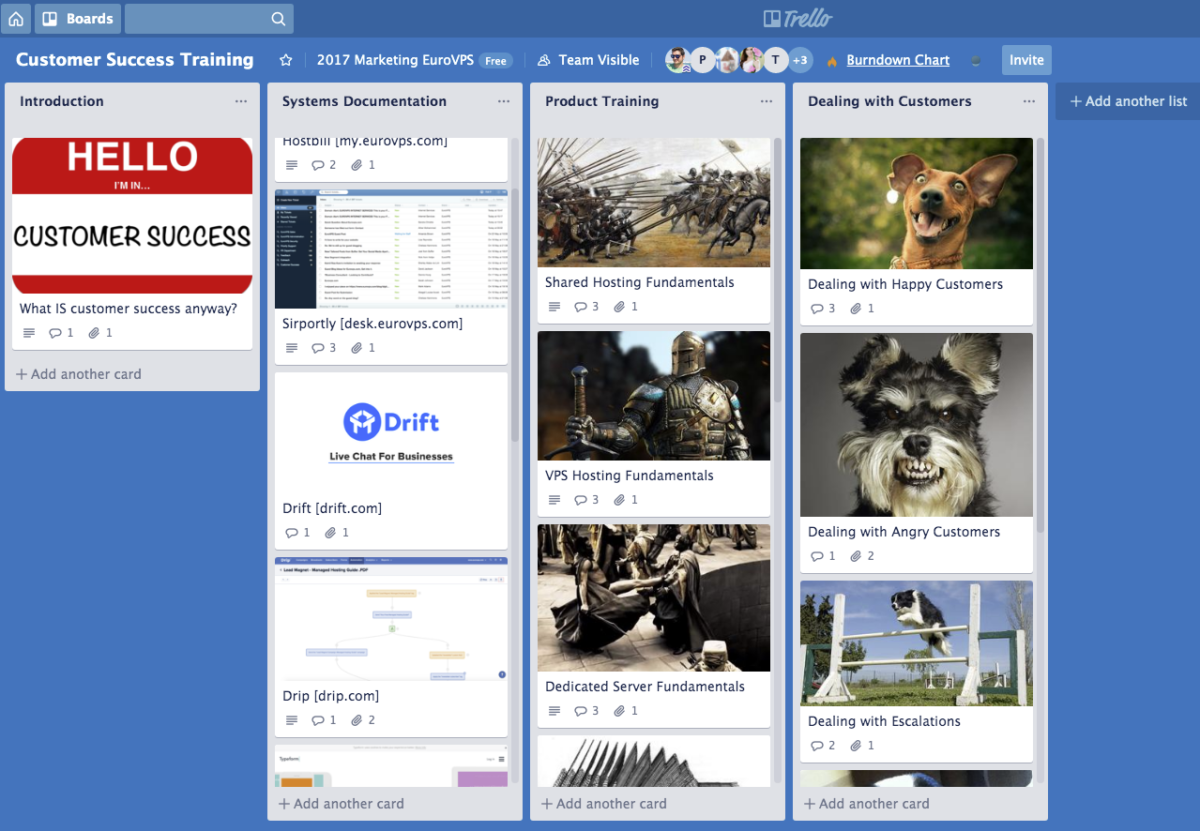
Each card in this trello board has a Typeform quiz that each new member of staff has to pass with at least a 90% score before they can start work with customers.
Make sure your data’s clean
We’ve all read that quote before.
But what if you aren’t measuring things properly?
It’s happened to me many times that I had the best intentions with my analytics setup, but for one reason or another, the data I was looking at was just plain wrong.
- Old inaccurate data
- Duplicate event triggering
- Inconsistent naming schemas
- No cross-subdomain tracking considerations
- etc. etc
It’s much better to measure just 3-4 things and measure them properly than measure 20-30 with less than 100% confidence across all metrics.
If you’re not 100% confident in the integrity and consistency of your data you’re setting yourself up for failure.
Conclusion
Learning growth marketing is an exciting uphill journey. It’s a relatively new job role that has more in common with entrepreneurship than traditional marketing. Being a growth marketer requires you to think of the business from a zoomed-out perspective. It’s a role that requires you to be perpetually curious about how each component in the business can affect the next, and how to harness a cascading effect to spur growth.
Hopefully you got some value from these tips!
If you’d like to jump on a free growth mentor call with me, check out my profile here.
